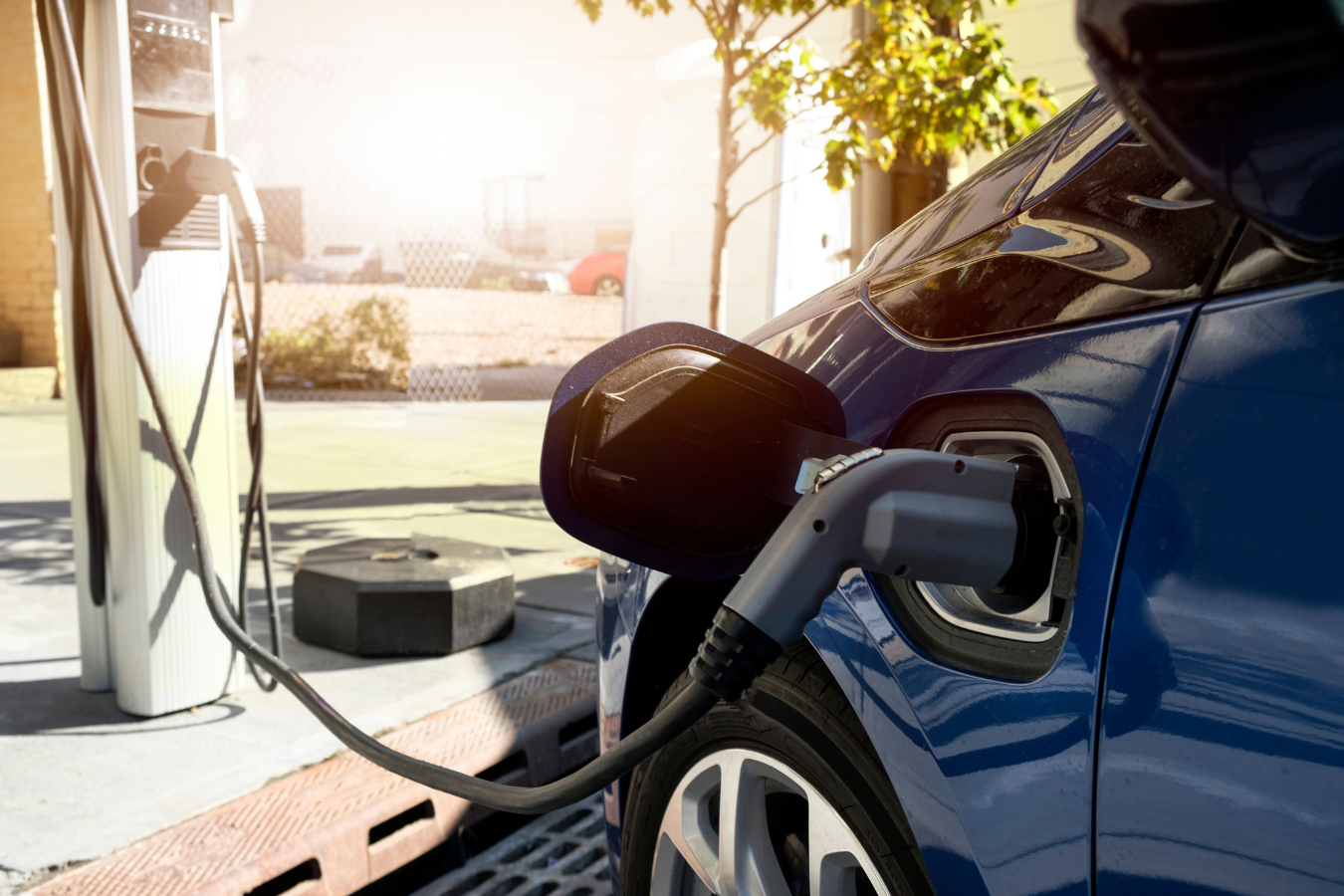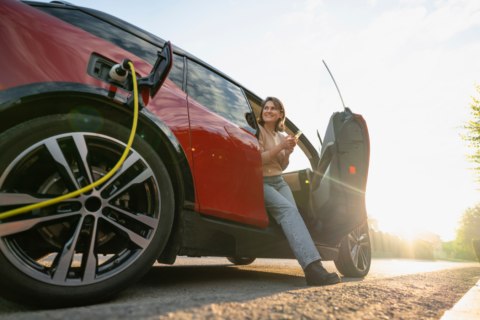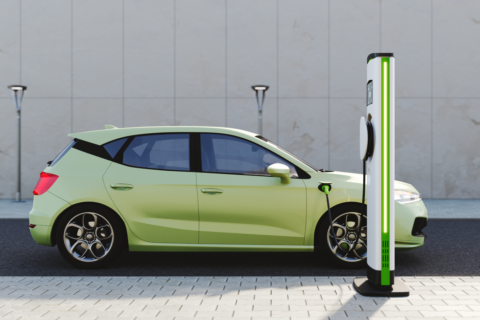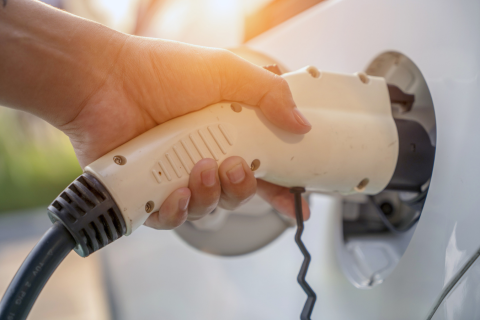All Americans should have the opportunity to benefit from the lower operating costs, reduced maintenance needs and improved performance that electric mobility provides. In addition, all communities—including underserved communities—should have access to the economic opportunities and improved air quality that electric mobility offers. Providing more Americans with the option to utilize electric vehicles (EVs) is one element in the Biden-Harris Administration’s long-term strategy to eliminate climate-related emissions from transportation, alongside investments in other mobility modes that give Americans real choices in how to travel.
To prepare for the growing number of plug-in electric vehicles on the road and once in a generation transformation of our transportation network, local leaders are beginning to develop EV-related infrastructure, policies, and services. The U.S. Department of Transportation, U.S. Department of Energy and Joint Office of Energy and Transportation (Joint Office) have recently published two technical resources to help communities take full advantage of federal funding for electric vehicle (EV) charging stations and other forms of electric transportation.
The Rural Electric Mobility Toolkit includes recently updated information on transit and school buses, micromobility options and accessible design. The Urban Electric Mobility Toolkit contains content related to multifamily housing, building codes, curbside charging and fleet charging. Together these resources offer insights for cities electrifying transportation across the nation.
These resources contain comprehensive matrices outlining federal funding opportunities for transportation electrification, including those opportunities made possible through President Biden’s Bipartisan Infrastructure Law such as the $5 billion National Electric Vehicle Infrastructure (NEVI) Formula Program and the $2.5 billion Charging and Fueling Infrastructure (CFI) Discretionary Grants Program administered by the Federal Highway Administration and supported by the Joint Office.
In both toolkits, the funding opportunities are organized by agency, program name, program type, program description, eligible parties, and potential uses of funding, including light-duty vehicle charging, transit charging, commercial charging, micromobility, infrastructure planning, workforce development and vehicle acquisition.
The unprecedented federal investment in EV charging will support innovative approaches and ensure that transportation electrification meets the Biden-Harris Administration’s priorities such as supporting rural charging, improving local air quality and increasing access to electrified modes of transportation. These toolkits provide information and assistance to accelerate an electrified transportation system that is convenient, affordable, reliable and equitable.
Rural Toolkit
Today, the rate of EV adoption in rural areas is roughly 40 percent lower than it is in urban areas, and EV charging infrastructure expansion has mostly been concentrated in cities and along major highways. Lower density and longer trips have resulted in urban-rural disparities in shared mobility adoption as well. Closing these gaps will help rural residents, businesses, and communities more quickly realize the significant economic, environmental and health benefits from EVs.
For rural communities, the Rural Electric Mobility Toolkit is intended to be a one-stop shop for scoping, planning and funding EV infrastructure. This toolkit is intended for a variety of rural stakeholders, including States, local communities, Tribes, transportation providers, non-profits, businesses and individuals. The toolkit focuses on infrastructure for light-duty electric passenger vehicles (such as sedans, sport utility vehicles, and pickup trucks), but also addresses funding opportunities and planning considerations for other types of electric vehicles, including transit and school buses, medium- and heavy-duty vehicles and agricultural equipment such as tractors. The toolkit contains best practices for planning EV charging networks and tips to navigate federal funding and financing to help make these projects a reality.
Urban Toolkit
While many EV owners can charge their vehicles at home or work, people who live in higher density areas (especially those living in apartments and condos) may not have easy access to a garage or the space for a private charger, which means they are more reliant on public charging options. Building an affordable and accessible public charging network will help make electric forms of transportation more convenient for Americans who live in urban communities. According to research from the National Renewable Energy Laboratory (NREL), building out this publicly available charging network will require 182,000 fast charging ports as well as 1 million Level 2 charging ports in high-density neighborhoods, office buildings, and retail outlets.
The Urban Electric Mobility Toolkit is the urban companion to the Rural Toolkit, providing a similarly comprehensive resource for communities, metropolitan planning organizations (MPOs), transportation providers, businesses, property owners and developers on how to scope, plan and fund electrified mobility transportation infrastructure.
Recognizing the multimodal nature of urban environments, the toolkit includes guidance to implement charging for electric vehicles, as well as other forms of electric transportation such as public transit, electric bikes and scooters, carsharing and ride-share services.
Cities Leading on Electrification
Electrifying the transportation network is a huge undertaking and requires massive transformation of existing permitting and processes, as well as innovative new service delivery models. Here are two examples of how communities are working towards mass EV adoption:
Requiring Electric Vehicle Charging Infrastructure in New Buildings
The City and County of Denver (CCD) adopted new EV Infrastructure building codes that will help homeowners and employers install electric vehicle chargers. CCD’s 2019 building and fire codes require new homes or townhouses to have electrical equipment that allows for easy installation of EV charging infrastructure. Additionally, the Denver EV Action Plan mentions that new EV multifamily and workplace building codes have provided even more opportunities for community members to charge their EVs.
Supporting Zero Emission Transportation through Community Partnership
The St. Louis Vehicle Electrification Rides for Seniors (SiLVERS) project provides free transportation to seniors and youth to connect people to social services. The program has a total of five vehicles with five charging stations between the two destinations: a local community center for children and seniors and a senior center. The project emerged through the American Climate Challenge, which was a partnership between the City of St. Louis, a nonprofit environmental advocacy group, and a philanthropic organization. The project was created through a partnership of local community-based organizations, including the local community center, the local senior center, the St. Louis Agency on Aging and a nonprofit organization. DOE’s Vehicle Technologies Office provided funding to help purchase the vehicles and infrastructure and to collect data on the benefits of the project.
Start Here
- For rural communities, check out Charging Forward: A Toolkit for Planning and Funding Rural Electric Mobility
- For urban communities, check out Charging Forward: A Toolkit for Planning and Funding Urban Electric Mobility Infrastructure
About the Author
Debs Schrimmer is a Senior Advisor for Urban and Community charging at the Joint Office of Energy and Transportation. Her work focuses on developing policies and programs that advance urban electrified mobility through unique charging solutions designed to support multifamily housing, curb management/mobility hubs, integration with transit and shared mobility and other ways that meet the needs of communities.







